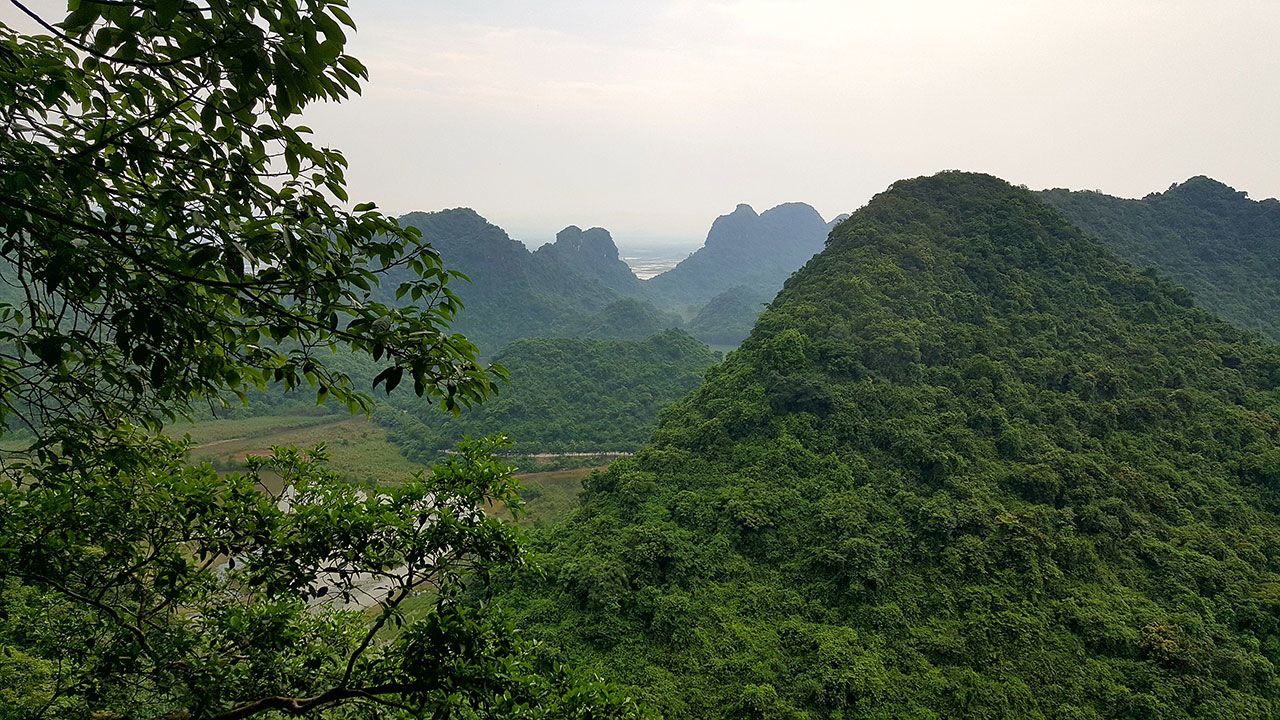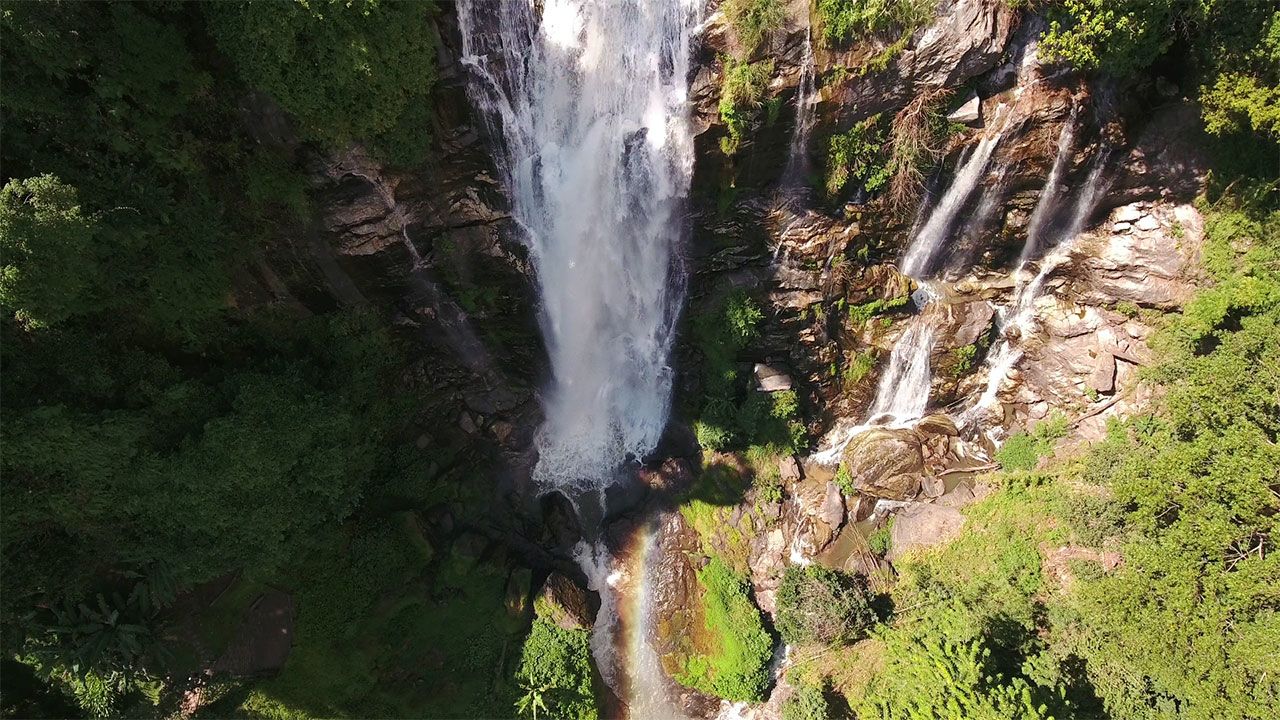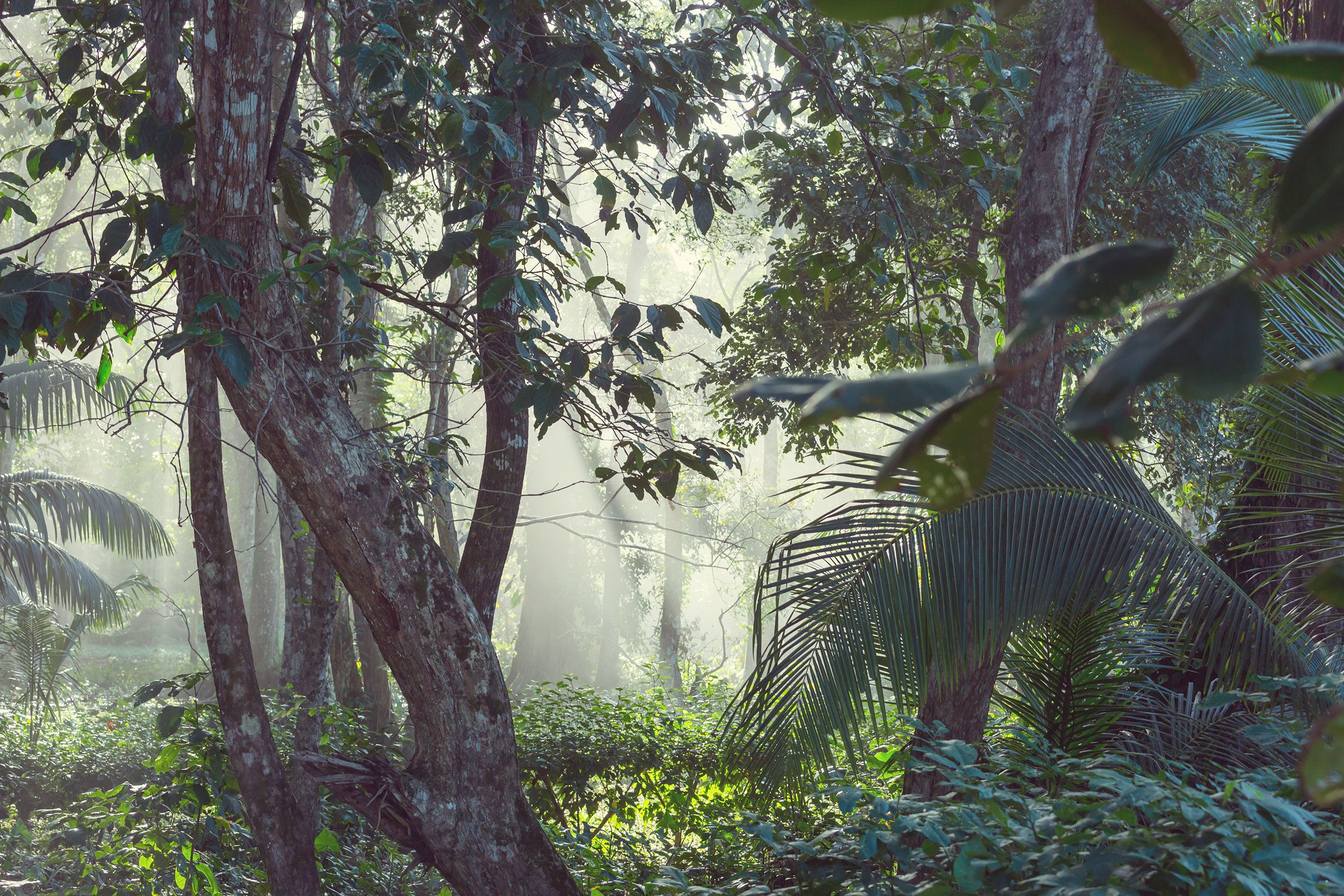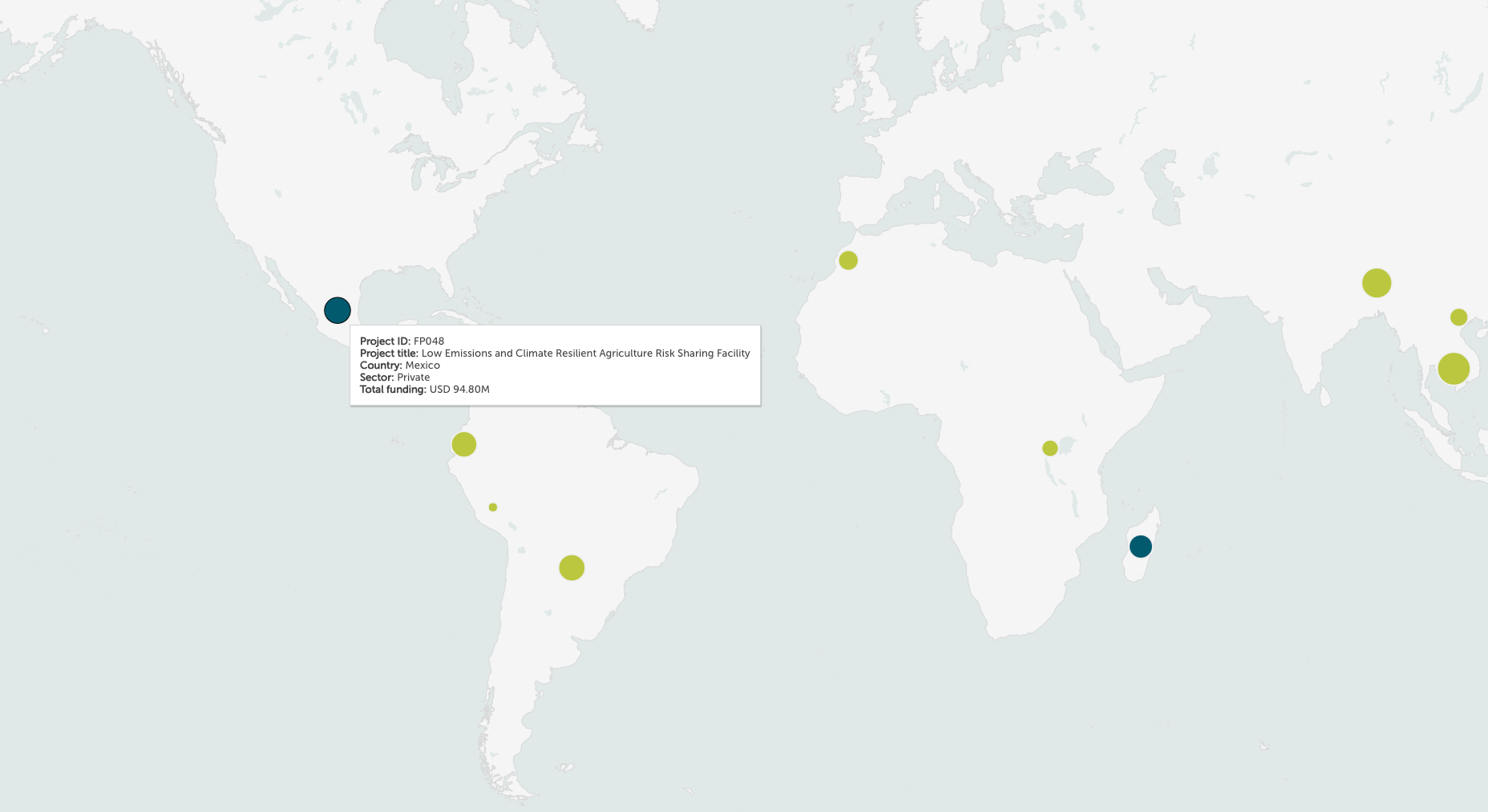Forests: A cause of climate concern, and hope

You don’t know what you’ve got until it’s gone.
This is a common refrain that suits efforts to protect the world’s forests well. Unfortunately, the intrinsic value of forests as the world’s lungs might become most apparent in their absence.
While urbanised people generally only think about forests as shady refuges from the stresses of modern life, many of those living in and around forests rely on them to maintain their livelihoods. Ultimately though, wherever we live, we all have a stake in the future of forests as they serve a critical role in preventing the whole planet heating to dangerous levels.
This is because forests can act as both sinks storing carbon dioxide, thereby reducing greenhouse gas concentrations, and as greenhouse gas emitters, if they are cut down or burnt on a large scale. Their survival is critical in dealing with climate change. Forests currently absorb 2.6 billion tonnes of carbon dioxide each year, equivalent to about a third of the amount released annually by burning fossil fuels. At the same time, deforestation contributes to the nearly 24 percent of all greenhouse gas emissions from land use activities — more than that emitted by the world’s entire transport sector.
The degradation of forests then acts as a net source of emissions. This recognition has led to current efforts to reverse this trend by turning two negatives into a positive – by providing linked incentives to reduce deforestation and climate change.
Forests can fill the
“emissions gap”

The threat of continuing deforestation, mostly driven by agriculture, is real and present. Last year was the second-worst on record for the loss of tropical tree cover, according to new data from the University of Maryland released by the online platform Global Forest Watch. The affected area equalled the size of Bangladesh. This is equivalent to losing 40 football fields of trees every minute for an entire year.
While this is concerning, moves to save forests, and thereby lock emissions into the ground, offer hope for global efforts addressing climate change. This hope is linked to an aspiration that forests can become part of the climate solution, rather than act as net contributors.
UN Environment’s most recent stocktake of climate action finds national pledges under the Paris Agreement reach only a third of required emission reductions to keep temperature rises to well under 2°C by 2030. While highlighting the serious nature of this global challenge, UN Environment also indicates that keeping forests standing will help close this “emissions gap."
Frances Seymour, a well-known forestry expert at the World Resources Institute, says protecting forests is the most cost-effective strategy to reach the Paris Agreement goal of balancing emissions and removals.
World Resources Institute Senior Distinguished Fellow Frances Seymour / Photo by IISD/ENB | Francis Dejon
World Resources Institute Senior Distinguished Fellow Frances Seymour / Photo by IISD/ENB | Francis Dejon
“Stopping deforestation and allowing damaged forests to grow back would be equivalent to reducing current global emissions from all sources by up to 30 percent”
In addition to this natural form of carbon capture and storage, forests also have an important role in bolstering people’s livelihoods, providing clean air and water, and enhancing people’s ability to adapt to climate change because of their rich ecosystems.
About 80 percent of the world's documented species are found in tropical rainforests, even though they cover only about 6 percent of the planet’s land surface. Forests also provide a wide range of products and services for local people. This is particularly important as around 40 percent of the extreme rural poor, numbering around 250 million, live in forest and savannah areas.
GCF support
for forests

With clear climate and social cases for preserving forests , it is not surprising that GCF is a strong supporter of climate action that keeps trees in the ground and encourages new forest cover which match social conditions. Ms Seymour from the World Resources Institute welcomes the growing presence of forest projects in GCF’s portfolio.
“Despite its large mitigation potential, forest protection currently receives less than 2 percent of climate finance,” she said. Ms Seymour pointed to GCF’s recent launch of a pilot programme on results-based finance for REDD+ as a substantial move in the right direction. “Making payments contingent on performance is the key innovation of REDD+,” she added.
The REDD+ results-based payments pilot programme, launched at the end of last year, is designed to boost public finance streams for REDD+ that support the measurement of emission reductions and then pays for them at the national level and within different countries’ regions. With the launch of the pilot, GCF is the only funding mechanism that supports all three phases of REDD+.
REDD+ is a UN-supported accounting and funding mechanism which supports developing countries’ efforts to reduce emissions from deforestation and forest degradation, and foster conservation, sustainable management of forests, and enhancement of forest carbon stocks.
GCF Principal Forest and Land Use Specialist Juan Chang said GCF is now analysing the REDD+ financial landscape to encourage complementarity and coherence in delivering forest-based climate finance.
“We want to ensure developing countries can take a streamlined approach in seeking REDD+ support from different sources. The role of GCF is to act as catalytic mover to encourage the take up of REDD+ and other forest and land-based solutions to climate change.”
This includes innovative moves to explore how to increase the crucial role of the private sector, he added. Currently, private sector support in climate finance protecting forests is largely untapped, with the public sector contributing nearly 90 percent of reported REDD+ finance.
REDD+ Results Based Payment proposal approval process
REDD+ Results Based Payment proposal approval process
The 3 phases of REDD+ / Source: FAO
The 3 phases of REDD+
Exploring private
sector potential

A key feature of GCF is its mandate to tap the private sector to maximise the volume of financial support available to address climate change. GCF’s REDD+ results-based payments pilot programme may open new possibilities in bridging the current payment gap for REDD+. It could do this by attracting private sector funds, and helping to create an enabling environment to leverage the potentially large cash reserves accompanying business support.
This is part of GCF’s broader moves to explore opportunities to engage with the private sector to fund REDD+ and other forest-focused climate financing. GCF seeks to build on ongoing initiatives such as current work on deforestation-free commodity supply chains and ongoing efforts by Tropical Forest Alliance 2020 and the New York Declaration on Forests, as well as looking how it might incorporate technological breakthroughs, such as blockchain.
Not all forest-focused climate finance is REDD+. GCF continues to expand its support for a broad range of projects that address climate change by protecting forests including, but not exclusive to, REDD+. Its forest portfolio includes 10 approved projects, totalling USD 314 million, which cover Mexico, Guatemala, Ecuador, Peru, Paraguay, the Gambia, Morocco, Uganda, Madagascar, Bhutan, Cambodia and Viet Nam. Disbursement has already begun for six of these projects.
Amazon effort

While GCF’s support for forest covers a wide geographical area, there is particular interest in the work it is funding in the planet’s largest rainforest – the Amazon. While vitally important for the people who live in this vast forest covering several Latin American nations, the Amazon’s global significance is measured by its planetary footprint. It is seen as a key regulator of the global climate because of the way the life cycle of its trees interacts with the atmosphere.
GCF is supporting two projects focusing on the Amazon – in Ecuador and Peru.
In Ecuador, it is working with UNDP on a USD 15 million REDD+ initiative aimed at helping this Latin American country achieve its goal of net zero deforestation by 2020. GCF financing, which is now being implemented, is contributing to Ecuador’s REDD+ action plan, known as Socio Bosque. The targeted investment will support the plan by controlling agricultural expansion in forested areas, and introducing agricultural and livestock production practices that reduce deforestation.
This climate finance will also encourage loans that encourage sustainable farming practices, promote tax incentives for activities supporting REDD+, and ease the flow of deforestation-free commodities in the global market. A key part of this investment in forests involves working closely with indigenous communities in planning, and supporting them through incentive payments to transition to sustainable production.
Indigenous inclusion

Indigenous engagement is a central feature of many of GCF’s forest projects as it is deemed crucial in gaining the local support necessary for effective implementation. It is the core of a GCF project in Peru now being implemented by the Peruvian Trust Fund for National Parks and Protected Areas (PROFONANPE) – a GCF direct access Accredited Entity.
This USD 9.1 million project helps indigenous communities in the northern Peruvian province of Datem del Marañón manage their wetland resources in ways that avoid deforestation and the large-scale release of greenhouse gases stored in local peatlands. While peatlands cover only three to five percent of Earth’s surface, they are key in addressing climate change as they are estimated to hold more than 39 percent of the planet’s carbon stocks.
The Peruvian project supports indigenous people’s traditional harvesting of palm trees in ways that aviod cutting the trees down. The project thereby enables sustainable harvesting of fruit from the trees, which can bring considerable financial rewards, as the oil is used globally in food ingredients, hair and skin products.
PROFONANPE has been consulting closely with the Amazon people in the wide and remote project area which crosses seven different cultures and languages. Alberto Paniagua, PROFONANPE’s Chief Executive Officer, says ongoing engagement is essential to win the trust of local communities who are often wary of outsiders’ intent.
Mr Paniagua said this project is a great example of a local initiative with global benefits.
PROFONANPE Executive Director Alberto Paniagua / Photo by the Ministry of Environment of Peru
PROFONANPE Executive Director Alberto Paniagua / Photo by the Ministry of Environment of Peru
“Essentially, we are all responsible for the Amazon as it is the planet’s lungs. All life depends on this ecosystem.”
Growing population pressures and the search for new lands to cultivate are likely to continue putting pressure on the world’s remaining forests. The challenge of stemming deforestation is considerable. However, the increasingly apparent climate connection, where incentives to halt deforestation are linked with efforts to address global warming, may work in the favour of forests. GCF will continue to search for innovative opportunities where its strategic financial support can root forest protection at the centre of growing climate action.

GCF’s growing forest portfolio is
- helping protect the Amazon through its Ecuador and Peru projects
- promoting forest planting and reforestation to sequester carbon in Paraguay
- promoting a sustainable landscape approach through private finance in Madagascar
- improving ecosystem services in Uganda wetlands
- restoring dryland areas in Morocco by protecting Argan orchards
- restoring degraded forests and landscapes in Gambia
- improving agricultural value chains in Cambodia
- helping Bhutan adopt a transformational approach to forest preservation by protecting up to 51 percent of the country
- adopting a two-country approach in Mexico and Guatemala to work with agricultural and agroforestry enterprises to transition to low-emission climate resilient agriculture.


































